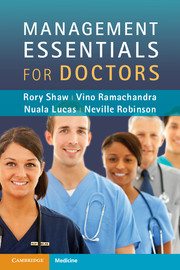Book contents
- Frontmatter
- Contents
- Contributors
- Foreword
- Preface
- Acknowledgements
- Section 1 Core knowledge
- Section 2 Core skills
- Section 3 Important bodies
- Section 4 Information, evidence and research
- Section 5 Money
- Section 6 NHS structures
- Section 7 Operations
- Section 8 Safety and quality
- Chapter 42 Patient safety
- Chapter 43 Recent disasters in healthcare in England
- Chapter 44 Litigation
- Chapter 45 Clinical governance
- Chapter 46 Risk management
- Chapter 47 Ensuring quality
- Chapter 48 Quality indicators
- Chapter 49 Patient feedback
- Section 9 Staff issues
- Index
Chapter 44 - Litigation
Published online by Cambridge University Press: 05 March 2012
- Frontmatter
- Contents
- Contributors
- Foreword
- Preface
- Acknowledgements
- Section 1 Core knowledge
- Section 2 Core skills
- Section 3 Important bodies
- Section 4 Information, evidence and research
- Section 5 Money
- Section 6 NHS structures
- Section 7 Operations
- Section 8 Safety and quality
- Chapter 42 Patient safety
- Chapter 43 Recent disasters in healthcare in England
- Chapter 44 Litigation
- Chapter 45 Clinical governance
- Chapter 46 Risk management
- Chapter 47 Ensuring quality
- Chapter 48 Quality indicators
- Chapter 49 Patient feedback
- Section 9 Staff issues
- Index
Summary
When a medical error occurs and a patient is harmed, the patient or the bereaved will be looking for an explanation, an apology and reassurance that the same thing will not happen to someone else. They may also be looking for financial compensation to recompense them for loss sustained as a result of the error and sometimes as a means to obtain retribution. Different countries deal with this in different ways according to their legal systems. In the UK the issue of harm caused by negligence is covered by civil law. Negligence is a tort: an act or omission that causes harm to an individual's property, reputation or interests. The law of tort imposes a duty of care where one party could reasonably foresee that his or her conduct may cause harm to another. In most cases of medical negligence, the claimant has to prove that he or she has suffered injury or other harm because of the negligence of the healthcare provider. Some medically negligent conduct may also constitute a criminal offence.
To support them in the event that this occurs, all doctors are required to have medicolegal insurance cover. When a GP is sued he or she is defended and insured by his or her defence association – usually the Medical Defence Union or the Medical Protection Society. The situation is similar for private practice. For allegations of negligence in hospitals, the NHS organization carries the indemnity and is effectively insured by the government via the NHS Litigation Authority (NHSLA), which was formed in 1995.
- Type
- Chapter
- Information
- Management Essentials for Doctors , pp. 140 - 142Publisher: Cambridge University PressPrint publication year: 2011



